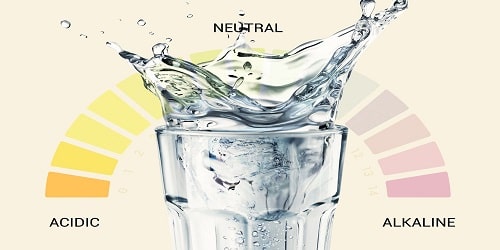Alkaline Meaning
The origin of the word alkaline is Arabic. It comes from “alqali” and can be translated as “ash”, a base substance that was achieved by the combustion of wood.
By alkaline we mean, in a substance, the description of its pH balance (power of hydrogen). A base or alkali is a notion that is opposed to that of acid since alkaline substances have high pH levels. While acids have excess hydrogen ions, a spicy and acrid taste, they are corrosive when in contact with the skin, their solutions are electrolytes and litmus paper turns red in their presence; The bases or alkalines are slippery and soft, they color litmus paper but blue, they have a bitter taste, they have few hydrogen ions and their aqueous solutions conduct electricity. They have saponification reactions, since when they react with fats they produce soaps. An example is bleach. In water, its alkalinity is the degree to which it is able to neutralize acids.
Among the metals, located in the center and on the left of the periodic table, the alkali metals correspond to those located in column I. They are, of the metals, the group with the greatest activity, since by having a single electron in their last shell, they can very easily give it up. They are lithium, sodium, potassium, rubidium, cesium, and francium.
Alkaline diets are those that aim to regulate the acid-base balance in the body to prevent the body from increasing its acidity and causing kidney stones and urinary infections. Some supporters of alternative medicine consider it effective in protecting the heart, bones and preventing cancer. It is recommended to eat fruits and vegetables (less plums and blueberries). Foods that produce acid ash would be meats, cheeses, eggs, and grains.
Alkaline Meaning in Hindi
क्षारीय शब्द की उत्पत्ति अरबी है। यह “अल्कली” से आया है और इसका अनुवाद “राख” के रूप में किया जा सकता है, जो एक आधार पदार्थ है जिसे लकड़ी के दहन से प्राप्त किया गया था।
क्षारीय(Alkaline) से हमारा मतलब है, किसी पदार्थ में, उसके पीएच संतुलन (हाइड्रोजन की शक्ति) का वर्णन। एक आधार या क्षार एक ऐसी अवधारणा है जो अम्ल के विपरीत है क्योंकि क्षारीय पदार्थों का पीएच स्तर उच्च होता है। जबकि अम्लों में हाइड्रोजन आयन अधिक होते हैं, एक मसालेदार और तीखा स्वाद होता है, वे त्वचा के संपर्क में आने पर संक्षारक होते हैं, उनके घोल इलेक्ट्रोलाइट्स होते हैं और लिटमस पेपर उनकी उपस्थिति में लाल हो जाता है; क्षार या क्षारीय फिसलनदार और नरम होते हैं, वे लिटमस पेपर को नीला रंग देते हैं, उनका स्वाद कड़वा होता है, उनमें कुछ हाइड्रोजन आयन होते हैं और उनके जलीय घोल बिजली का संचालन करते हैं। उनमें सैपोनिफिकेशन अभिक्रियाएँ होती हैं, क्योंकि जब वे वसा के साथ प्रतिक्रिया करते हैं तो वे साबुन बनाते हैं। इसका एक उदाहरण ब्लीच है। पानी में, इसकी क्षारीयता वह डिग्री है जिस तक यह एसिड को बेअसर करने में सक्षम है।
आवर्त सारणी के केंद्र और बाईं ओर स्थित धातुओं में, क्षार धातुएं कॉलम I में स्थित धातुओं के अनुरूप हैं। वे धातुओं में से, सबसे अधिक सक्रियता वाले समूह हैं, क्योंकि उनके अंतिम शेल में एक एकल इलेक्ट्रॉन होने के कारण, वे इसे बहुत आसानी से छोड़ सकते हैं। वे लिथियम, सोडियम, पोटेशियम, रुबिडियम, सीज़ियम और फ़्रैन्शियम हैं।
क्षारीय आहार वे होते हैं जिनका उद्देश्य शरीर में अम्ल-क्षार संतुलन को नियंत्रित करना होता है ताकि शरीर की अम्लता को बढ़ने से रोका जा सके और गुर्दे की पथरी और मूत्र संक्रमण हो। वैकल्पिक चिकित्सा के कुछ समर्थक इसे हृदय, हड्डियों की रक्षा करने और कैंसर को रोकने में प्रभावी मानते हैं। फलों और सब्जियों (प्लम और ब्लूबेरी कम) खाने की सलाह दी जाती है। एसिड ऐश पैदा करने वाले खाद्य पदार्थ मांस, पनीर, अंडे और अनाज होंगे।

